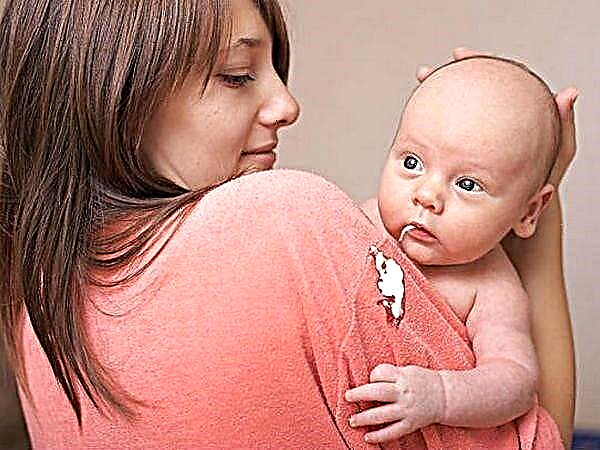
In the spring and summer, all children are at increased risk. It is not so easy to protect a child from a tick bite, and the consequences can be tragic - tick-borne encephalitis caused by the bite of infected ticks can lead to the death or disability of the child.

What it is?
Tick-borne encephalitis is a viral infectious disease that is extremely dangerous for humans. The younger the child, the more dangerous this ailment is for him. Arbovirus (flavovirus), which is transmitted through the saliva of sick ticks, causes severe damage to the brain, spinal cord and the entire central nervous system. Carriers of such a virus can be ixodid ticks, which live almost everywhere, except for hot tropical countries. There are a lot of them in Siberia, the Far East, China and Mongolia. There are carriers of the virus in the forests of Eastern European countries, Scandinavia.
Up to 6 thousand cases of tick-borne encephalitis are recorded annually in Russia during the period of activity of ixodid ticks.
It lasts from April to July, the second wave of arthropod activity is the beginning of autumn. It is noteworthy that a child can get a destructive virus not only after a direct tick bite, but also upon contact with biological fluids of birds, animals previously bitten by such a tick.

Causes
The name of the disease fully reflects the cause of its occurrence - the infected ixodid tick is to blame for the disease. The virus that it carries and secretes with saliva, when examined under a microscope, is a spherical pile of particles with small protrusions along the surface. It is one of the smallest viruses, half the size of the influenza virus and four times the size of the measles virus. But this small and harmful virus, due to its small size, can easily overcome all the protective barriers of human immunity.
Arbovirus is weak before exposure to high temperatures, it dies after a couple of minutes of boiling. And also the pathogenic organism does not like sunlight and disinfectants, it easily dies in the environment in sunny weather.
At low temperatures, arbovirus can live happily ever after, which is why it can remain active in chilled cow's milk if a cow or goat is bitten by an ixodid tick shortly before milking. These creatures love tall bushes, grass, trees, so the child can be bitten while walking in the forest, field, park, forest park area.
A child can become infected after being bitten by such an arthropod, the virus can enter the body when trying to crush a tick. If he has already bitten the baby, the disease is possible when eating food from infected animals, if the food has not been boiled. The longer the tick is in the host's body, the more likely it is that encephalitis will begin.

Types of disease
Tick-borne encephalitis is a generic term for several distinct types of disease. They are divided into the following groups according to the severity of symptoms and signs:
- feverish - in about half of all cases, this form of the disease occurs, associated with the development of severe fever;
- meningeal - occurs in a third of all cases, is associated with damage to the membrane of the brain, spinal cord;
- focal - this form develops in every fifth patient, it is associated with damage to the brain substance and the appearance of severe neurological symptoms.

Symptoms and signs
After a bite of an encephalitis tick or other penetration of a flavovirus into the body, some time should pass. This period is called incubation, it runs latentand can also last from one to two weeks. Less common are rapid forms, when the first signs of the disease may appear after a day. Protracted forms are possible, when the manifestation of the disease becomes obvious only a month after the bite. While the incubation period is going on, the particles of the virus multiply, penetrate into the blood, and migrate throughout the child's body. As soon as they manage to successfully cope with their task, it is time for an active illness with the manifestation of symptoms and signs.
The initial signs that manifest tick-borne encephalitis are similar in all types of the disease. The further course, predictions and consequences depend on the specific form of the disease. Initial symptoms include the following:
- acute and sharp deterioration in health;
- headache, chills, aches and pains in muscles and joints;
- weakness, lethargy;
- vomiting;
- heat
- sometimes convulsions.


The skin of the face looks reddened, the redness spreads to the neck and reaches almost to the clavicle. In the whites of the eyes, blood vessels dilate. What happens next depends on the type of ailment.
- Feverish... The high temperature lasts up to 10 days, while the temperature can rise and fall, each individual attack of fever can last up to several days. By the end of the second week of illness, the condition begins to stabilize. The danger lies precisely in the high temperature, at which children, especially toddlers, often develop dehydration and febrile seizures.
- Meningeal. 3-4 days after the onset of the disease, the child develops symptoms of damage to the meninges, both spinal and cerebral. Headache intensifies, pain relievers are practically ineffective. Against the background of severe pain, repeated vomiting appears. The occipital muscles are tense, in connection with which the child takes a characteristic posture - throws the back of the head back. The temperature lasts about 2 weeks. But even after improvement of the condition for about 2-3 months, lethargy, painful perception of loud sounds and bright light, and mood swings persist.
- Focal. This is the most severe form of the disease, in which the very substance of the brain is affected, and not only its shell, as in the previous case. The temperature rises to +40 degrees and higher, the child is lethargic, drowsy, he has repeated vomiting, convulsions. Consciousness is clouded or disturbed. Auditory and visual, as well as tactile hallucinations, delirium appear. If the brain stem is affected, breathing and heart problems may occur.
If the virus infects the cerebellum, the child's coordination of movements is impaired, and if the flavovirus infects the spinal cord, then paralysis and paresis are possible, usually they affect the upper body.

Often, such an ailment proceeds in two waves: first, a febrile stage occurs, when it seems that the disease has already receded, an acute focal form starts in the child. The consequences can be different. It all depends on how deeply and extensively the structures of the brain were damaged. Sometimes violations persist for several months, and sometimes they are irreversible. With a focal type of encephalitis, the likelihood of death is higher.
Diagnostics
For a more accurate and quick diagnosis, parents should be able to answer as accurately as possible the doctor's questions about the time of onset of symptoms, in what sequence they occurred. An important role is played by the child's residence in the region, in which the probability of infection is increased due to the spread of ixodid ticks, as well as the facts of walking in the forest, park, eating unboiled goat's or cow's milk products.
To put an end to the diagnosis and answer all questions will help laboratory research. Particles of the virus must be detected in the child's blood, as well as in the cerebrospinal fluid, for which a puncture is performed.

Treatment
Any type of ailment - both the mildest and the most severe, is treated exclusively in a hospital, home treatment is excluded. At the time of illness, the child is not contagious to others, so there is no need to go to the infectious diseases department, but there is an urgent need to undergo treatment at a neurological hospital under the supervision of neurologists.
The patient is given antiviral treatment designed to weaken the flavovirus and prevent further spread. Symptomatic care, according to clinical guidelines, is provided depending on the form and type of the disease. The child needs strict bed rest. At high temperatures, lytic mixtures are shown, they are administered intramuscularly. With signs of dehydration, water-salt solutions, saline are injected, with convulsions, anticonvulsants are given.
In the first week, special attention is paid to the introduction anti-mite immunoglobulin. It helps to activate the immune defense of the baby's body. It is administered according to the scheme for three days, carefully observing the dosage and instructions. But immunoglobulin does not give the desired effect with late diagnosiswhen the virus has already entered the central nervous system. In this case, it makes no sense to fight the flavivirus, you need to save the baby.
To do this, they can use a ventilator, the use of diuretics to reduce intracranial pressure, antipsychotics to stabilize the brain.

How successful the treatment will be depends on how damaged the child's nervous system is. Doctors give the most favorable prognosis for a febrile form; with it, recovery is complete. The meningeal type of tick-borne encephalitis also has a conditionally favorable prognosis, but sometimes chronic headaches and migraines remain as a consequence of it, which a child can suffer from for several months, and several years, and all his life. The most severe consequences can have a focal type of encephalitis.
The mortality rate with it reaches 30%, which means that almost every third child dies, despite the efforts and titanic efforts of doctors. Survivors may experience persistent paralysis, seizures, a significant decrease in mental capabilities and intelligence.

Tick-borne encephalitis is easier to prevent than to treat and predict... For prevention is provided vaccination and certain activities, which will help reduce the likelihood of being bitten. Residents of all regions where the likelihood of tick-borne encephalitis is increased must be trained in safety rules that allow them to go out into nature, walk in the park and the forest relatively safely. It is worth adhering to the following recommendations:
- clothing should be light, but closed, the less skin is open, the less the risk of being bitten;
- the child and his clothes should be carefully examined after walking in the forest or park during the period of tick activity;
- if a tick is found that has already bitten a child, you should immediately contact a medical institution, where the arthropod will be correctly removed from the wound and immunoglobulins will be administered to the child;
- milk must be boiled if you decide to pamper your child with a farm product.

The tick-borne encephalitis vaccine can be given to children from one year of age. It is given in three injections according to the scheme with breaks of 1-6 months, revaccination is carried out every 3 years. The vaccine does not guarantee, of course, that the child will not become infected with encephalitis after a tick bite, but it guarantees that the child's disease will be mild and febrile and will not cause severe damage to the brain and nervous system. Vaccination is free and compulsory for residents of endemic regions, the rest is done at will.




